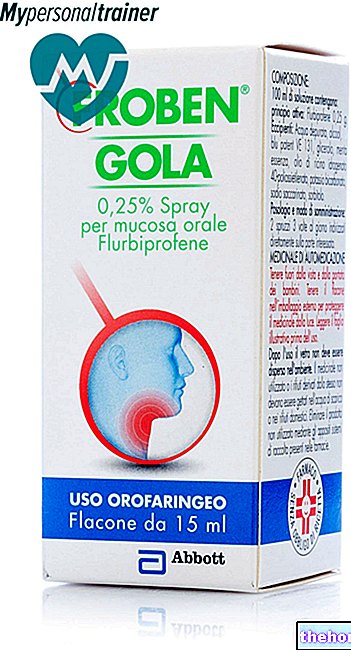Active ingredients: Clindamycin
Zindaclin? 1% Gel
Why is Zindaclin used? What is it for?
Zindaclin is used in the treatment of mild to moderate acne (pimples). Zindaclin contains an antibiotic (clindamycin) which reduces the number of bacteria, prevents skin pores from clogging and the formation of new pimples. Zindaclin can also help reduce the redness of existing pimples.
Once you start using Zindaclin, it will take some time before you see improvement in your acne.
What is acne?
Acne is an extremely common skin condition, mainly in adolescence but not restricted to this stage of life. During adolescence, the glands in the skin produce excess fat in response to the amount of sex hormones in the body, and this causes the pores to clog, leading to the formation of blackheads. When this happens the pores are invaded by bacteria. The chemicals produced by these bacteria penetrate the deeper layers of the skin and produce red pimples filled with pus.
Contraindications When Zindaclin should not be used
Do not use Zindaclin
- If you are allergic (hypersensitive) to the active substance clindamycin phosphate or to any of the excipients contained (see section 6)
- If you are allergic (hypersensitive) to lincomycin, another type of antibiotic.
An allergic reaction can include skin rash, redness, itching, edema, or difficulty breathing.
Zindaclin should not be used in children below 12 years of age.
Precautions for use What you need to know before taking Zindaclin
Be especially careful with Zindaclin
- Before using Zindaclin, consult your doctor if you suffer from a condition known as inflammatory bowel disease (such as colitis or Crohn's disease) or if you have diarrhea when taking antibiotics. If you have diarrhea when using Zindaclin, stop the treatment and consult your doctor immediately.
- If you are taking other antibiotics consult your doctor before using Zindaclin
Interactions Which drugs or foods may change the effect of Zindaclin
Tell your doctor or pharmacist if you are taking or have recently used any other medicines, including medicines bought without a prescription.
Interaction with other antibiotics such as erythromycin, metronidazole and aminoglycosides is possible.
Warnings It is important to know that:
Pregnancy and breastfeeding
Ask your doctor or pharmacist for advice before using any medicine.
Tell your doctor if you are pregnant, think you are pregnant or are trying to have a baby before using Zindaclin.
Clindamycin can pass into breast milk, even when used only on the skin, so you should avoid breastfeeding while using Zindaclin.
Important information about some of the ingredients of Zindaclin
The product contains:
- About 20% ethanol. Each gram contains approximately 0.2 g of alcohol.
- Propylene glycol can cause skin irritation.
Dose, Method and Time of Administration How to use Zindaclin: Posology
Zindaclin is not to be used by mouth. It is for cutaneous use only.
Always use Zindaclin as your doctor has suggested. If you have any further questions, ask your doctor or pharmacist.
- You must use Zindaclin once a day. Wash as usual, rinse well and pat your skin dry. Apply a small portion of the gel in a thin layer to the entire area where you usually have pimples.
- It is important to close the tube with the cap after using Zindaclin.
Do not
- apply Zindaclin in areas where you usually do not have pimples.
- using Zindaclin in an attempt to prevent acne, it doesn't work that way
- apply Zindaclin on single pimples
- apply a thick layer of Zindaclin as this will not get rid of pimples as quickly
- cover Zindaclin with tissue (e.g. bandages and plasters) as this may increase the risk of irritation.
Take care to avoid your eyes, the inside of your nose or mouth when applying Zindaclin. If you accidentally put the gel in these areas, wash them off immediately with plenty of water.
It may take several months for successful acne treatment. You may not see any effect of the treatment for several weeks. After that you will notice a gradual and definitive improvement, although the maximum benefit can be obtained after many months. Your doctor will normally check after 6 or 8 weeks of treatment. Zindaclin should be used for up to 12 weeks. You may need to use more than one tube of Zindaclin during each course of treatment. Use Zindaclin for as long as your doctor has given you. prescribed.
Try not to touch or squeeze pimples as this can make your acne worse and even cause scarring.
Overdose What to do if you have taken too much Zindaclin
If you use more Zindaclin than you should
Don't worry, just wash the treated area with plenty of water. Contact your doctor or local hospital if you are concerned.
If you forget to use Zindaclin
Use it as soon as you remember and then continue to use it as your doctor has prescribed. Do not use a double dose to make up for a forgotten dose.
If you have any questions about the use of this product, consult your doctor or pharmacist.
Side Effects What are the side effects of Zindaclin
Like all medicines, Zindaclin can cause side effects, although not everybody gets them.
Common (less than 1 in 10, but more than 1 in 100 people)
Dry skin
Redness of the skin
Burning of the skin
Irritation around the eyes
Worsening of acne
Itchy skin
Uncommon (less than 1 in 100, but more than 1 in 1000 people)
Skin pain
Scaly rash
You can alleviate these side effects by using a non-greasy moisturizer on the affected area.
When clindamycin (active ingredient in Zindaclin) is given by mouth or injection, it is known to cause intestinal inflammation, leading to bloody and mucus diarrhea. This reaction is extremely rare when clindamycin is applied to the skin.
In any case, if you have diarrhea with blood and mucus, stop taking Zindaclin and contact your doctor immediately.
If any of the side effects gets serious, or if you notice any side effects not listed in this leaflet, please tell your doctor or pharmacist.
Expiry and Retention
Keep this medicine out of the reach and sight of children. Zindaclin does not require any special storage conditions.
Do not use Zindaclin after the expiry date which is stated on the tube and carton after the abbreviation EXP. The expiry date refers to the last day of the month.
Medicines should not be disposed of via wastewater or household waste. Ask your pharmacist how to dispose of unused medicines. This will help protect the environment.
Composition and pharmaceutical form
What Zindaclin contains
The name of the medicine is Zindaclin 1% Gel.
Zindaclin contains the active substance clindamycin phosphate. Each gram of gel contains 10 mg of clindamycin (1% w / w) equivalent to 11.88 mg of clindamycin phosphate. Zindaclin also contains propylene glycol, purified water, ethanol, zinc acetate, hydroxyethylcellulose and sodium hydroxide.
Description of what Zindaclin looks like and the contents of the pack.
Zindaclin is a translucent white gel.
Zindaclin is packaged in 15g, 30g, 60g laminated tubes with a film-protected closure and screw cap.
Source Package Leaflet: AIFA (Italian Medicines Agency). Content published in January 2016. The information present may not be up-to-date.
To have access to the most up-to-date version, it is advisable to access the AIFA (Italian Medicines Agency) website. Disclaimer and useful information.
01.0 NAME OF THE MEDICINAL PRODUCT
ZINDACLIN 1% GEL
02.0 QUALITATIVE AND QUANTITATIVE COMPOSITION
1 g of gel contains 10 mg of clindamycin (1% w / w) equal to 11.88 mg of clindamycin phosphate.
ZINDACLIN 1% GEL contains propylene glycol (40% w / w).
For the full list of excipients, see section 6.1.
03.0 PHARMACEUTICAL FORM
Gel
Translucent white gel.
04.0 CLINICAL INFORMATION
04.1 Therapeutic indications
ZINDACLIN is indicated for the treatment of mild and moderate acne vulgaris.
04.2 Posology and method of administration
Adults and adolescents
Apply a thin layer of ZINDACLIN once a day on the affected area. It is good practice to check the patient's response after 6-8 weeks of treatment. However, the duration of treatment should not exceed 12 weeks.
Children
ZINDACLIN is not indicated for children below 12 years.
Cutaneous use.
04.3 Contraindications
ZINDACLIN is contraindicated in patients with hypersensitivity to the active substance clindamycin or to any excipient contained in the medicinal product. Although cross-sensitivity with lincomycin has not been demonstrated, it is recommended not to administer ZINDACLIN to patients who have experienced "hypersensitivity to lincomycin."
04.4 Special warnings and appropriate precautions for use
Oral and parenteral administration of clindamycin, like most antibiotics, has been associated with the onset of severe pseudomembranous colitis. The topical use of clindamycin has been associated only in very rare cases with pseudomembranous colitis; however, if diarrhea occurs, the product must be discontinued immediately.
Studies have shown that the primary cause of antibiotic-dependent colitis is a toxin produced by Clostridium difficile. Colitis is usually characterized by severe and persistent diarrhea and abdominal cramps. In the event that antibiotic-associated colitis occurs, you must immediately proceed with diagnostic tests and the institution of appropriate therapy (eg discontinuation of ZINDACLIN and, if necessary, antibiotic treatment with vancomycin or metronidazole).
The response may appear after 4-6 weeks.
Although the risk of systemic absorption following administration of ZINDACLIN is low, the possible occurrence of adverse effects on the gastrointestinal tract must still be evaluated in the indication of treatment to patients with a history of antibiotic-dependent colitis, enteritis, colitis. ulcerative disease or Crohn's disease.
Prolonged use of clindamycin can lead to the development of resistance and / or cause the growth of non-susceptible bacteria or fungi, although this is rare.
Cross-resistance with other antibiotics such as lincomycin and erythromycin is possible. See section 4.5.
Avoid contact with the eyes or with the mucous membranes of the nose and mouth. In case of accidental contact with the eyes or mucous membranes, rinse the affected area with plenty of fresh water.
ZINDACLIN 1% Gel contains propylene glycol. May cause skin irritation.
The use of occlusive dressing may increase the irritation potential of ZINDACLIN.
04.5 Interactions with other medicinal products and other forms of interaction
In vitro studies have shown antagonism between erythromycin and clindamycin, synergy with metronidazole and both antagonistic and synergistic effects with aminoglycosides.
04.6 Pregnancy and breastfeeding
There are no clinical data on the cutaneous application of clindamycin in pregnancy. Some data relating to a limited number of cases of use of clindamycin in pregnancy administered by other routes do not indicate adverse effects on pregnancy or on the health of the fetus / newborn. From the studies conducted on the animals do not emerge direct or indirect harmful effects on pregnancy, on the development of the embryo / fetus, on parturition or on postnatal development. However, the drug should be prescribed with caution to pregnant women.
The presence of clindamycin in breast milk has been reported following oral or parenteral administration. It is not known whether clindamycin is excreted in breast milk after taking ZINDACLIN. In general, it is a good idea to stop breastfeeding while taking any medicine since many of them are excreted in human milk.
It is therefore advisable to carefully evaluate the benefit / risk ratio in case of administration during pregnancy or breastfeeding. Sensitization and diarrhea phenomena in nursing children cannot be excluded.
04.7 Effects on ability to drive and use machines
Not relevant.
04.8 Undesirable effects
About 10% of patients may experience an adverse reaction. These reactions are those characteristic of irritant dermatitis. The incidence may increase if an excessive amount of gel is used. In case of irritation, the use of a moisturizing product may be helpful.
The table below lists all adverse reactions observed with ZINDACLIN in clinical studies. They are listed by frequency, in descending order.
Although no cases of severe diarrhea or pseudomembranous colitis have been reported during clinical trials with ZINDACLIN and the amount of clindamycin absorbed through the skin is minimal, very rare cases of pseudomembranous colitis have been reported associated with the use of other topical products. There is therefore a theoretical risk of developing pseudomembranous colitis following the use of ZINDACLIN (see section 4.4).
04.9 Overdose
Overdose is not expected to occur with normal use. The incidence of adverse reactions typical of irritant dermatitis is increased when excessive amounts of ZINDACLIN were applied. In these cases it may be useful to use a suitable moisturizer. In subsequent applications a thin film of ZINDACLIN should be applied according to the dosage instructions (see section 4.2).
05.0 PHARMACOLOGICAL PROPERTIES
05.1 Pharmacodynamic properties
Pharmacotherapeutic group: Antiinfectives for the treatment of acne
ATC code: D10A F01
ZINDACLIN contains clindamycin phosphate, which is transformed into the active ingredient clindamycin in the skin by hydrolysis. Clindamycin is a lincosamide antibiotic which has mainly "bacteriostatic activity against Gram positive aerobes and a" wide range of anaerobic bacteria.
In the cutaneous administration of clindamycin phosphate, clindamycin is found in the samples of comedones, at concentrations sufficient to exert an activity against most of the strains of Propionibacterium (P. acnes). It therefore reduces the number of superficial and follicular P.acnes , one of the etiological factors of the disease.
As with other antibiotics, prolonged use of clindamycin in the skin can lead to the development of resistance.
05.2 "Pharmacokinetic properties
The ZINDACLIN formulation results in a reduction in systemic absorption of clindamycin. An in vitro study with ZINDACLIN applied to healthy human skin demonstrated that the in vitro absorption of radiolabelled clindamycin phosphate from the ZINDACLIN formulation is less than 5% of the applied dose.
When ZINDACLIN is applied cutaneously in patients with acne, at a dosage of 8 g per day for 5 days, well above the maximum expected clinical dosage, the plasma levels of clindamycin measured were very low (on average less than 2 ng / ml) .
Clindamycin phosphate is metabolised to the parent drug in the skin and clindamycin itself is metabolised primarily in the liver via N-demethylation, sulfoxidation and hydrolysis and essentially excreted in the bile.
05.3 Preclinical safety data
Preclinical data for clindamycin indicate no risk to humans based on conventional studies of safety pharmacology, repeated dose toxicity, genotoxicity or reproductive toxicity.
06.0 PHARMACEUTICAL INFORMATION
06.1 Excipients
Propylene glycol
Purified water
Ethanol 96%
Zinc acetate dihydrate
Hydroxyethylcellulose
Sodium hydroxide 30% (w / w)
06.2 Incompatibility
Not relevant.
06.3 Period of validity
2 years.
06.4 Special precautions for storage
No special storage precautions.
06.5 Nature of the immediate packaging and contents of the package
ZINDACLIN is packaged in tubes of 15 g, 30 g or 60 g internally lined with high density polyethylene and with a closure protected by a film. The tube is equipped with a white opaque polypropylene screw cap.
Not all pack sizes may be marketed.
06.6 Instructions for use and handling
No special instructions.
07.0 MARKETING AUTHORIZATION HOLDER
Difa Cooper S.p.A.
Via Milano, 160
21042 Caronno Pertusella VA
Italy
08.0 MARKETING AUTHORIZATION NUMBER
ZINDACLIN 1% gel 15 g AIC n. 036862011 / M
ZINDACLIN 1% gel 30 g AIC n. 036862023 / M
ZINDACLIN 1% gel 60 g AIC n. 036862035 / M
09.0 DATE OF FIRST AUTHORIZATION OR RENEWAL OF THE AUTHORIZATION
August 2006
10.0 DATE OF REVISION OF THE TEXT
October 2011




























